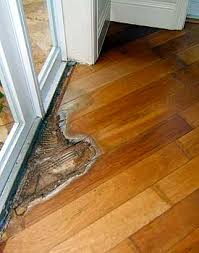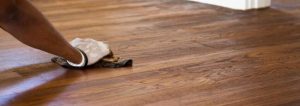 Hardwood floor the best flooring choice. However, it can get damaged in several ways. Luckily, even if your timber floor for damaged extensively. You can choose to repair the damaged areas instead of the whole floor by resanding and repolishing. With the unfixable portions of your floor, you should decide to replace them by getting old floorboards from revival timber flooring stores that you can find.
Hardwood floor the best flooring choice. However, it can get damaged in several ways. Luckily, even if your timber floor for damaged extensively. You can choose to repair the damaged areas instead of the whole floor by resanding and repolishing. With the unfixable portions of your floor, you should decide to replace them by getting old floorboards from revival timber flooring stores that you can find.
If your damaged hardwood floor has a lot of heavy damage, you’ll need to have it removed and replaced by a professional. If you wish to stain or varnish it, you should hire a deep penetrating wood floor refinisher or a flooring contractor. If, however, you determine you don’t need a complete overhaul, continue reading to see how you can further restore your damaged hardwood floor.
Repairing your damaged wood floor, or putting new finishing on the existing wood floor, depends on the extent of the damage it suffered.
Structural Damage
When your wood floor has cracks, missing boards, or damage near the base, major repair work is required to restore the floor to a regular appearance.
Dry the floor as much as possible and apply either concrete, paint, or carpet padding if the floor needs to be resanded.
Clean the subfloor and apply Forest Oil start to finish to remove all dirt, then sand. Depending on the direction of the damage, apply a stain. Paint and finish must be used in an airless environment. For example, if a bad rain caused the delay, it will not dry evenly on your wood floor, and you’ll need to apply more stain later in the drying process.
It’s essential to bear in mind that it’s not always possible to remove all the stains at one time, depending on the type and amount of stain used. Many people have wood floors that have not disassembled and remain a little damp. When stained, it is essential to effectively mix the stain and water in a consistent ratio, muddy to light, to distribute reaction begin before stain sits. Correctly apply the stain, and wait for it to dry before standing on your wood floor or walking across it. If it’s a rainy day, just covering the stain with plastic will prevent the stain from seeping too deeply into the wood base. Bluestone and slate are commonly used as flooring due to their very smooth surfaces.
For instance, one brand of paint, Prim wax, contains metal oxides resulting in a stain that is impervious to water. Therefore, when you use these products, it is advisable to buy a clear sealant.
Some wood floors exposed to moisture can warp, crack, or shrink.
Damage near grout lines may cause the wood floor to become disjointed.
Flattening of the floor surface caused by heavy furniture is also common. If this happens, the floor is ready for refinishing. In this case, you just need to replace the damaged tile with a new one.
Using a slightly dampened rug, vacuum the surfaces in order to clean them properly.
Then, place a treated drop cloth, and using a gouge or plug, sand the floor lightly.
Mix a yellow-colored hardwood floor finish with water, and brush on the first coat applying very little pressure. If you worked hard on the floor, the finish should blend in with depth.
Once the floor is dried, apply two coats of a neutral color stain more lightly. Always provide a heavy, medium-duty polyurethane to finalize the floor.
Compliment your hardwood floor with a couple of coats of polyurethane sealer.

Once the floor has been re jointed and given an evident seal, you’re ready to refinish the floor. This is done by first sanding the floor following the direction of the grain of the wood. Next, apply several coats of a neutral-colored stain, allowing each coat to dry before applying the next. Do not let one coat to dry before applying the next.
It’s a good idea to try out several techniques on paper before you seal your floors. Choose a stain color that will enhance and not detract from the warmth of your hardwood floors.